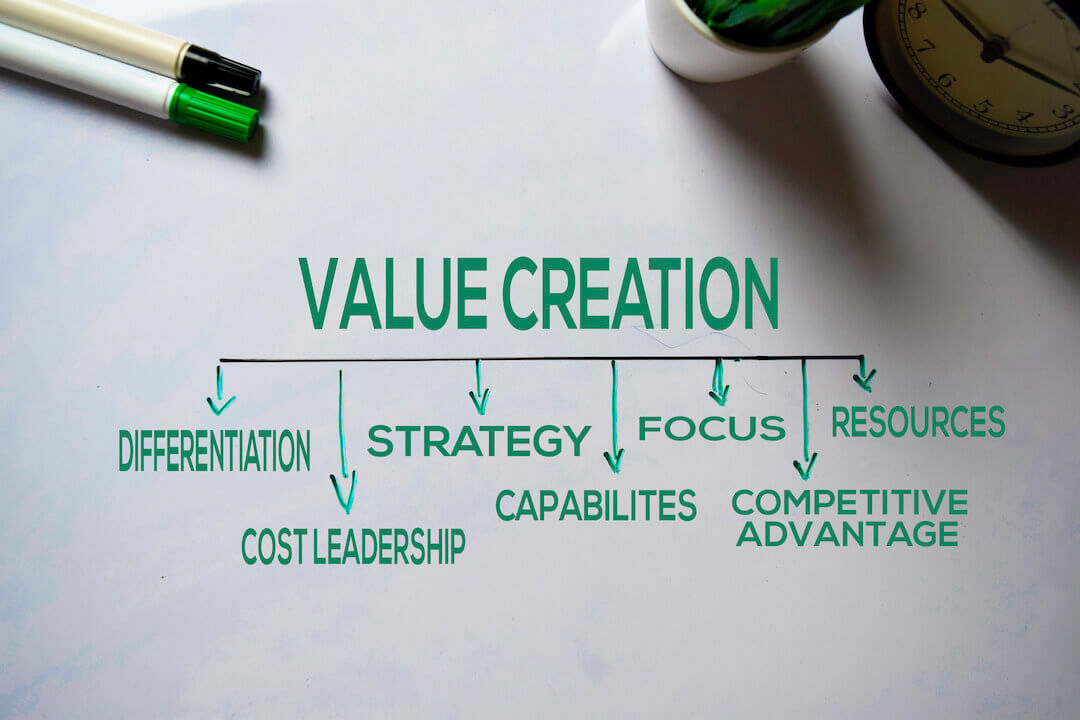BUSINESS
Unlocking the Full Potential of SAP Calculations

In the UK, SAP calculations (Standard Assessment Procedure) have become synonymous with energy efficiency and compliance. These assessments are vital for meeting Building Regulations and ensuring your new construction meets minimum energy performance standards.
However, the potential of SAP calculations extends far beyond merely ticking the compliance boxes. Here we are going to take a closer look at how SAP can be a strategic tool for driving innovation, achieving cost savings, and even boosting marketing success.
SAP: A Multifaceted Tool for Builders
While it’s easy to see SAP as just a compliance checklist, its potential is far more expansive. SAP is not merely a static assessment; it’s a dynamic tool that can be utilised throughout your project’s lifecycle to drive efficiency, improve decision-making, and even boost your market appeal. Let’s explore these multifaceted aspects:
A Diagnostic Lens
SAP calculations provide a granular look at your building’s energy profile. By analysing every aspect of your design, from the thermal performance of the walls and windows to the efficiency of the heating system and the impact of lighting choices, you gain valuable insights into where energy might be wasted and where opportunities for improvement lie. It’s like having an x-ray vision for energy efficiency, highlighting the building’s strengths and weaknesses.
A Design Optimization Tool
Armed with the detailed information from your SAP assessment, you can make informed decisions about design modifications and material choices. Perhaps a different type of insulation would yield greater thermal efficiency, or switching to a more advanced heating system could significantly reduce energy consumption. SAP calculations give you the power to explore these options and find the sweet spot between performance, cost, and compliance.
A Risk Management Strategy
The construction process is fraught with potential pitfalls, from unexpected delays to costly overruns. By integrating SAP calculations early on, you can mitigate risks associated with energy performance. Identifying and addressing compliance issues at the design stage can save you from expensive rework later.
Moreover, a robust SAP assessment can serve as a valuable tool when negotiating with building control officers, demonstrating your commitment to energy efficiency and ensuring a smoother approval process.
A Communication Asset
In an increasingly environmentally conscious market, showcasing your commitment to sustainability is a smart business move. A good EPC rating, backed by a thorough SAP assessment, communicates to potential buyers or tenants that your building is not only compliant but also designed with energy efficiency in mind. This can give you a competitive edge, attracting those seeking lower energy bills and a smaller carbon footprint.
A Tool for Continuous Improvement
Even after your building is completed, the SAP assessment doesn’t lose its value. The energy model created during the assessment can serve as a baseline for ongoing monitoring and improvement. By comparing actual energy consumption data to the predicted values, you can identify discrepancies and opportunities for further optimization, ensuring your building continues to perform at its best.
Collaboration with Experts
While SAP software is available for DIY calculations, the complexity of the process and the nuances of building regulations necessitate the expertise of a qualified SAP assessor, like those on the team at Focus360 Energy.
A professional assessor can guide you through the intricacies, ensure accuracy, and provide tailored recommendations that align with your project goals and budget. By collaborating with experts, you not only ensure compliance but also gain a valuable partner in your quest for energy efficiency.
Going Beyond Compliance: Unlocking Hidden SAP Calculations Benefits
While SAP calculations are essential for meeting regulatory requirements, their value extends far beyond mere compliance. They open up a treasure trove of benefits that can significantly enhance your project’s success and impact:
Enhanced Thermal Comfort & Indoor Environmental Quality
A comfortable living or working environment isn’t just a luxury – it’s a necessity for productivity and well-being. SAP calculations don’t just assess energy consumption; they also evaluate factors that influence thermal comfort, such as heat loss, solar gain, and ventilation.
By optimising these elements through SAP-guided design, you create spaces that are not only energy-efficient but also consistently comfortable, reducing the need for excessive heating or cooling. Additionally, proper ventilation, as assessed by SAP, ensures good indoor air quality, which can have positive impacts on occupant health and reduce the risk of moisture-related issues like mould.
Reduced Moisture Risk and Enhanced Durability
Condensation is a silent enemy of buildings, leading to dampness, mould growth, and potential structural damage. SAP calculations can assess the risk of condensation within your building fabric.
By identifying potential problem areas, such as thermal bridges or inadequate ventilation, you can take proactive measures to prevent moisture buildup and ensure your building’s longevity. This safeguards your investment and creates a healthier living or working environment.
Daylight Optimization and Connection to Nature
Maximising natural daylight in buildings has a multitude of benefits, from reducing the need for artificial lighting and its associated energy costs to improving occupant mood and well-being. While not directly part of the EPC calculation, SAP assessments can consider the impact of daylight and solar gain on energy performance.
This enables you to strategically place windows, choose the right glazing, and incorporate shading devices to optimise natural light while mitigating glare and overheating. By integrating daylighting strategies into your design, you create spaces that are not only energy-efficient but also inviting and uplifting.
Future-Proofing Against Changing Standards
Building regulations are not set in stone. They are constantly evolving to reflect advancements in technology and the urgent need for greater energy efficiency. By taking a proactive approach with SAP calculations, you can future-proof your building by designing to meet not just current standards, but also anticipated future requirements.
This means less risk of needing costly retrofits down the line and a building that remains competitive in the ever-changing sustainability landscape.
SAP as a Marketing Tool
In today’s competitive real estate markets, energy efficiency is a major selling point. Potential buyers and tenants are increasingly looking for homes that are not only stylish and comfortable, but also environmentally responsible and cost-effective to run. A high EPC rating, backed by a detailed SAP assessment, can be a powerful marketing tool.
Showcasing Sustainability and Attracting the Right Occupants
A strong EPC rating, backed by a detailed SAP assessment, isn’t just a regulatory badge of honour – it’s a powerful marketing tool that speaks volumes to potential buyers and tenants.
Demonstrate Sustainability
In today’s market, environmental responsibility is a key concern for many individuals and businesses. A high SAP rating demonstrates your commitment to sustainability and can attract eco-conscious buyers and tenants who are actively seeking properties with a lower carbon footprint. This is especially relevant in the UK, where there’s a growing trend towards greener living and working spaces.
Highlight Cost Savings
Energy bills are a major expense for any household or business. By showcasing a strong EPC rating, you’re essentially saying, “This building is designed to save you money.” This is a compelling message that can resonate with budget-conscious buyers and tenants who are keen to reduce their ongoing expenses. A detailed SAP assessment can even provide specific estimates of potential energy savings, further strengthening your case.
Build Trust and Credibility
Claims of energy efficiency can sometimes sound like marketing hype. But when backed by a credible SAP assessment conducted by a reputable assessor, those claims become verifiable facts. This transparency fosters trust and credibility with potential buyers and tenants, assuring them that your building’s energy performance is not just a promise, but a reality. It can also demonstrate your commitment to quality and responsible building practices, further enhancing your reputation in the market.
Attract Long-Term Tenants
For property owners, a high SAP rating can be a significant factor in attracting and retaining long-term tenants. Businesses are increasingly looking for energy-efficient spaces to reduce operating costs, enhance their brand image, and attract environmentally conscious employees. A well-performing building with a strong EPC rating can provide a competitive edge and secure stable tenancy agreements.
Gain Recognition and Awards
Some organisations and industry bodies recognize buildings with exceptional sustainability performance through awards and accolades. A high SAP rating could make your project eligible for such recognition, further boosting its profile and market appeal.
By highlighting the benefits of a high SAP rating in your marketing materials and communications, you can effectively target those who prioritise energy efficiency and sustainability, creating a win-win scenario for both your building’s occupants and your bottom line.
Beyond the Basics: Focus360’s Expertise
SAP calculations are a foundational element in sustainable building practices. But to truly unlock their potential, it’s important to partner with experts who understand the nuances of the assessment process and can offer tailored guidance for your specific project.
Companies like Focus360 specialise in SAP calculations and a wide range of related services. They can help you:
- Optimise your SAP results: Through detailed analysis and recommendations for improvement.
- Navigate complex regulations: Ensuring your project meets all relevant standards and avoiding costly mistakes.
- Go beyond energy efficiency: Explore other aspects of building performance, such as indoor air quality, thermal comfort, and renewable energy integration.
By collaborating with experienced professionals, you can create buildings that are not only compliant but also truly exceptional in terms of energy efficiency, sustainability, and overall performance.
Building the Future, One SAP Calculation at a Time
SAP calculations are a crucial tool in navigating the complex landscape of building regulations and sustainability goals. By understanding their potential and partnering with experts in the field, you can not only ensure compliance but also create high-performing buildings that minimise environmental impact, reduce energy costs, and appeal to a discerning market.
As the construction industry continues to evolve, embracing SAP calculations as a strategic asset will be essential for building a brighter and more sustainable future.
Meta title: SAP Ratings: The Key to Unlocking Your Building’s Potential
Meta description: From energy efficiency to environmental impact, explore the multifaceted benefits of achieving a high SAP rating for your building.
APPS & SOFTWARE
How To Manage Employees at Scale: Workforce Management Software

Companies that maintain a clear record of employee time, attendance, and tasks may experience boosted performance and improved bottom lines. Workforce management software enables labor-intensive organizations to maximize labor efficiency, minimize compliance risks, and develop strategic insight that improves business operations. Embracing a data-driven approach to management helps companies retain talent, cut labor costs, and adhere to labor laws. Here are a few ways workforce software can help you manage employees at scale:
Improved Labor Optimization
Management software identifies and alerts management to labor issues such as overstaffing or understaffing based on forecasted workloads. Workforce management software analyses historical data and business trends to align staff schedules with anticipated demand. It factors employee availabilities, skills, and preferences to generate optimized schedules that result in better timekeeping and adherence to deadlines. Businesses may experience reduced scheduling errors, optimized workforce utilization, smoother shift planning, and improved employee satisfaction due to fair and balanced schedules. Labor optimization increases productivity and success rates as each task is assigned and complies with the company’s workflow.
Enhanced Demand Forecasting
Accurately forecasting demand for a large and dispersed workforce, including remote employees, can present significant growth and operational efficiency opportunities. Miscalculated labor requirements lead to inefficient staffing that strains the budget and interferes with performance. A workforce management system uses artificial intelligence algorithms to predict workload volume for active operation days. The forecasted data can help management make informed decisions on when to increase or scale down the workforce. The software uses repeated data patterns to forecast future requirements, helping businesses to have better budget and resource allocation planning.
Automated Scheduling
Manual schedule creation is time-consuming for a large workforce, especially when different shifts and employee skills are involved. Workforce management systems are automated and generate schedules that align with forecasted demand, employee availability, and skill sets. Such systems allow for easy updating and making changes to the schedule. A workforce management tool features workforce sharing, smart templates, and shift swapping. It will enable staff to pick up open shifts or make changes that a supervisor approves. Automated scheduling streamlines administrative tasks and promotes equitable distribution of shifts.
Improved Time Tracking and Attendance
Employee attendance and time tracking help calculate the number of hours worked, overtime, and absences. Managing data tracking manually for a large workforce can pose challenges in terms of time consumption, error risks, and complexity. Workforce management software provides a more efficient solution by automating the time-tracking process. Employees clock in and out using their devices, eliminating discrepancies or manual calculations. This feature also helps managers better understand their employees’ productivity and identify any issues that may arise.
Improved Compliance and Reporting
Compliance with labor laws and regulations is a requirement for any organization. The laws stipulate maximum working hours, minimum wage, and overtime pay. Employees are entitled to rest, meal breaks, and a set number of vacation days. A workforce software ushers in automation and standardization, promoting law adherence. The software also generates comprehensive reports on employee data. The report makes it easier for organizations to monitor compliance and identify any areas of improvement. These reports can also aid in identifying trends and patterns within the workforce, enabling organizations to make proactive changes.
Enhanced Employee Engagement
Features in a workforce management system, including newsfeeds, polls, surveys, and scheduling communications, support effective information sharing across the organization. Highly engaged employees are more productive, have lower absenteeism rates, and stay with the company longer. Workforce management tools improve employee engagement in various ways. The software allows employees to view their schedules and adjust as needed, promoting transparency and control over their work hours. It provides a platform for employees to request time off, swap shifts with colleagues, and communicate with managers. This level of autonomy and communication fosters a sense of ownership and teamwork among employees. The software can track employee performance and provide top performers, further boosting engagement levels.
Maximize Efficiency With Workforce Management Software
Effective communication improves workplace efficiency and reduces errors. Workforce management software allows for streamlined communication between employees, managers, and HR personnel. The software sends automated notifications, reminders, and updates to keep everyone on the same page. It also provides a centralized platform for all employee information, eliminating the need for multiple manual systems. Investing in workforce software may lead to significant cost savings and improve organizational success. Implement workforce software into your business processes today.
BUSINESS
Creative Ways to Reuse and Recycle Takeaway Containers

Have you ever pondered over what to do with the masses of takeaway containers that end up filling our dustbins weekly? Due to their convenience and durability, countless containers find their way into our homes, usually tossed out without a second thought. However, with a touch of creativity and a concern for the environment, these often neglected items can be granted a second lease of life. This blog will provide you with innovative ideas to recycle and reuse takeaway containers.
1. Artful Planters
Why not transform takeaway containers into chic planters for your houseplants or your kitchen garden? Drill some holes at the bottom for drainage and get your green thumb working. They can support herbs, succulents, or a splash of floral beauty right at your windowsill.
2. Craft Supplies Storage
Takeaway containers make excellent storage options for art and craft supplies. Sort out your buttons, beads, sequins, paintbrushes, and numerous other craft essentials. They will be readily available when you need them, and your work area will remain clutter-free.
3. Homemade Candles
A fantastic way to reuse plastic or aluminium containers is by turning them into candle moulds. Not only will you be crafting beautiful homemade candles, but also contributing towards reducing plastic pollution.
4. Versatile Organisers
Declutter your workspace, vanity, or even your garage by using these handy containers as organisers. They can hold everything – from nails and screws to makeup and jewellery, ensuring that everything is always within your arm’s reach.
5. Seed Starters
One of the easiest ways to reuse plastic containers is to use them as seed starters. Poke some holes at the bottom, fill with potting mix, and start your seedlings. Once they’re ready to be transplanted, you can reuse the container a win-win situation for you and the environment.
6. Leftovers Best Friend
Think twice before you ditch that sturdy takeaway container – it can be a lifesaver for storing leftovers. It’s worth mentioning that they should be cleaned thoroughly and dried before using them for food storage again.
In Conclusion
Demonstrating creativity with takeaway containers not only helps to lower the volume of waste that we contribute to the environment but can also serve practical purposes around your home too. Next time, remember that these containers are way more than just a one or two-time food carrier. They are a valuable, reusable resource, and their possible applications are as extensive as your imagination permits. The key takeaway here is to ingenuity and transform what’s typically considered as trash into an example of smart recycling. So, let’s brace ourselves to gift our beloved takeaway containers a new life and towards reduced waste and a healthier planet.
BUSINESS
Mastering Logistics: Unleashing the Potential of 3PL Warehouse Management Software for End-to-End Supply Chain Success

In today’s hyper-competitive global market, businesses face a daunting challenge: to not only meet but exceed customer expectations while navigating the intricate web of supply chain logistics. From sourcing raw materials to delivering finished products, the efficiency and effectiveness of every link in the supply chain can make all the difference between success and stagnation. Enter third-party logistics (3PL) warehouse management software, a dynamic solution empowering businesses to conquer the complexities of modern commerce with unparalleled agility, precision, and continuous evolution.
Unveiling the Imperative for Logistics Technology
In the relentless pursuit of operational excellence, businesses are embracing technology as their trusted ally. Nowhere is this more evident than in logistics management, where outdated methods have become obsolete in the face of evolving consumer demands and global market dynamics. Recognizing the imperative for transformation, companies are turning to advanced logistics technology, with 3PL warehouse management software emerging as the cornerstone of their strategic arsenal.
Unraveling the Boundless Advantages of 3PL Warehouse Management Software
- Unparalleled Visibility and Transparency: Harnessing the power of real-time data analytics, 3PL warehouse management software offers unparalleled visibility into every facet of the supply chain. From inventory tracking to shipment status updates, businesses gain unprecedented insights, enabling informed decision-making and proactive problem-solving. With customizable dashboards and interactive reporting tools, stakeholders can access critical information anytime, anywhere, ensuring transparency and accountability across the organization.
- Optimized Efficiency and Productivity: By automating manual processes and streamlining operations, 3PL warehouse management software drives unmatched efficiency and productivity gains. With features such as automated order fulfillment, dynamic inventory replenishment, and intelligent route optimization, businesses can minimize costs, reduce lead times, and maximize throughput with unparalleled precision. Moreover, advanced algorithms and machine learning capabilities empower businesses to optimize resource allocation, minimize bottlenecks, and enhance operational agility in the face of changing demand patterns and market dynamics.
- Scalability and Adaptability: In the dynamic landscape of modern commerce, scalability and adaptability are non-negotiable traits for success. 3PL warehouse management software offers businesses the flexibility to scale their operations seamlessly, whether expanding into new markets, launching new product lines, or adapting to seasonal fluctuations. With customizable workflows and adaptable configurations, businesses can future-proof their logistics strategies and stay ahead of the curve. Moreover, cloud-based deployment options and modular architectures ensure scalability without sacrificing performance, allowing businesses to grow and evolve without constraints.
- Cost Optimization and Resource Utilization: In an era defined by razor-thin margins and relentless competition, cost optimization is paramount. 3PL warehouse management software empowers businesses to identify cost-saving opportunities, from optimizing inventory levels and reducing excess stock to minimizing transportation expenses and labor costs. By leveraging predictive analytics and machine learning algorithms, companies can unlock hidden efficiencies, forecast demand with precision, and drive sustainable cost reductions across the supply chain. Furthermore, real-time cost tracking and financial analytics enable businesses to monitor expenses, identify cost drivers, and make data-driven decisions to enhance profitability and competitiveness.
- Enhanced Customer Experience: In an age where customer experience reigns supreme, 3PL warehouse management software enables businesses to deliver unparalleled service excellence. With features such as real-time order tracking, automated notifications, and seamless returns management, companies can exceed customer expectations at every touchpoint, fostering loyalty and driving repeat business. Moreover, personalized customer portals and self-service capabilities empower customers to track shipments, manage orders, and resolve issues independently, enhancing satisfaction and loyalty while reducing service overheads. By prioritizing customer-centricity and responsiveness, businesses can differentiate themselves in the market, build brand loyalty, and drive sustainable growth in the long term.
Charting the Course for Future Innovation
As technology continues to evolve at an unprecedented pace, the future of logistics management holds limitless possibilities. From harnessing the potential of artificial intelligence and machine learning to leveraging the Internet of Things (IoT) for enhanced connectivity, the journey towards supply chain optimization is one of endless innovation and discovery. Emerging technologies such as blockchain, robotics, and predictive analytics are reshaping the logistics landscape, offering unprecedented opportunities for optimization, automation, and value creation. By embracing a culture of innovation and collaboration, businesses can stay at the forefront of technological advancements, drive continuous improvement, and unlock new avenues for growth and competitiveness.
Conclusion: Setting Sail Towards Success
In conclusion, the transformative power of 3PL warehouse management software is reshaping the landscape of modern commerce, empowering businesses to navigate the supply chain seas with confidence, agility, and foresight. By unlocking unparalleled visibility, driving operational efficiency, and enhancing customer experiences, 3PL warehouse management software serves as a beacon of innovation in an increasingly competitive marketplace. As businesses chart their course towards success, investing in 3PL warehouse management software isn’t just a strategic choice—it’s a voyage towards unparalleled growth, resilience, and prosperity in the digital age and beyond.

 ENTERTAINMENT5 days ago
ENTERTAINMENT5 days agoExploring the Kristen Archives: A Treasure Trove of Erotica and More

 ENTERTAINMENT1 day ago
ENTERTAINMENT1 day agoKiss KH: The Streaming Platform Redefining Digital Engagement and Cultural Currents

 TECHNOLOGY4 months ago
TECHNOLOGY4 months agoBlog Arcy Art: Where Architecture Meets Art

 LIFESTYLE4 months ago
LIFESTYLE4 months agoThe Disciplinary Wives Club: Spanking for Love, Not Punishment

 EDUCATION1 day ago
EDUCATION1 day agoLingrohub Platform: A Complete Student Access Guide

 ENTERTAINMENT3 weeks ago
ENTERTAINMENT3 weeks agoMonkeyGG2: Your Personal Gaming Hub

 TECHNOLOGY4 days ago
TECHNOLOGY4 days agoOurDream.ai Review: The Generative Art Engine Rewiring Imagination

 TECHNOLOGY1 day ago
TECHNOLOGY1 day agoCasibom: The Digital Alchemy Reshaping Systems, Society, and Self










